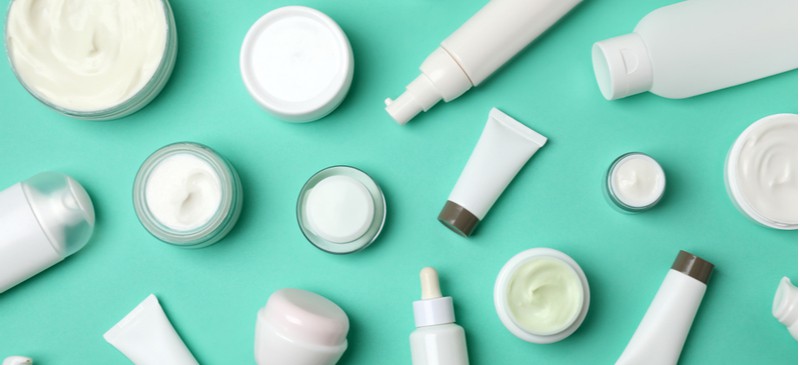
If you’ve looked at an ingredient list on any of your cosmetic or beauty products, you may notice the name of a common chemical. Propanediol is a natural solvent with many uses, which is why it’s often found in personal and beauty care products.
Propanediol is really drawing attention in the cosmetic space because it may be a much safer option than propylene glycol, a synthetic substance that’s also found in cosmetic products and has potentially dangerous side effects.
So is this multipurpose chemical safe when applied topically to our face and body? Hint: It’s likely better than the alternative.
What Is Propanediol?
Propanediol (also called 1,3-propanediol) is a natural solvent and emollient that’s derived from corn sugar. It’s typically clear and odorless.
The propanediol formula is C3H8O2. It’s considered the simplest member of the class of propane-1,3-diols.
The solvent is found in cosmetics and personal care products, such as face cleansers, lotions, toners and makeup.
Although the chemical is similar to propylene glycol, it’s thought to be a safer options, which is why it’s getting a good bit of attention in the cosmetics space. In fact, researchers suggest that it has gone from a “speciality chemical” to a “commodity chemical.”
Benefits/Uses
Propanediol is a versatile ingredient that’s used in cosmetic and body care products for its many functions. So why are you likely to see propanediol as an ingredient on so many beauty and body products?
Here’s a breakdown of its many benefits and uses:
1. Serves as a Solvent
Propanediol is commonly used as a solvent that’s able to dissolve substances that are found in cosmetic formulas.
2. Works as an Emollient
Propanediol is a natural emollient that moisturizes the skin when applied topically. It works to reduce water loss, leaving your face feeling softer.
3. Promotes Preservation
Propanediol works as a natural preservative in skin care and body products. It can increase the shelf life of products and promote lasting freshness.
4. Improves Product Texture and Consistency
Because of its ingredient-dissolving, preserving and humectant effects, propanediol is used in several products to improve texture and consistency.
READ RELATED: 19 Cleansers, Toners, Essences, and Skin-Care Tools for a Fresh Face
The solvent is often used in foaming face washes, for example, because it lends to the foam consistency that’s beneficial for people with sensitive skin.
5. Enhances Absorption
The chemical works as a penetration enhancer by altering the skin’s structure. This allows for other chemicals and ingredients in the skin care product to get deeper into the skin.
This can be viewed as a benefit and concern of using products containing the solvent. It enhances the absorption of beneficial chemicals that can impact the health of your skin and hair, but it also increases the penetration of not-so-healthy ingredients, allowing them to penetrate deeper into your skin.
Where It’s Found
As mentioned, this is a versatile solvent that’s found in a ton of cosmetic and personal care products. According to the propanediol EWG (Environmental Working Group) report, the chemical is found in the following types of products:
- cleansers and body washes
- facial cleansers
- facial moisturizers
- facial serums
- lotions
- makeup primer
- body scrubs
- foundations
- concealers
- eyeliners
- blush
- lipsticks
- brow liners
- mascara
- bronzers/highlighters
- hair dyes
- antiperspirants/deodorants
- shampoos and conditioners
- styling gel
- hair masks
- hair spray
- toothpaste
- mouthwash
- hand sanitizer
- sunscreens
- baby cleansers
Propanediol vs. Propylene Glycol
Propanediol, of 1,3-propanediol, is a natural chemical solvent that’s derived from corn and used in many body and face products. It is touted as a safer ingredient than propylene glycol (also known as 1,2-propanediol).
A little confusing, right? Although 1,3-propanediol and 1,2-propanediol are similar chemicals, the latter (which goes by propylene glycol) is linked to skin and eye irritations.
Propylene is made in a chemical process that begins with propene, which is a byproduct of fossil fuel. Propene is converted to propylene oxide, which is known as a probable carcinogen that’s used to create polyurethane plastics, and then the molecules are separated by water to get propylene glycol.
Propylene glycol is used in thousands of cosmetic products as well as processed foods, medications and electronic cigarettes.
There are differing opinions about whether or not propylene glycol is a dangerous toxin, with some investigated potential adverse effects being skin irritations, allergic reactions, neurological symptoms, respiratory issues and more. In essence, it has enough red flags to recommend avoiding it in your body products and foods.
Risks and Side Effects
The studies on propanediol safety are limited, but current data suggests that using it topically in cosmetic and body care products is generally safe, with a low risk of adverse effects.
When used in small amounts from topical skin products, the solvent has been found to exhibit few adverse effects. In some cases, people have experienced skin irritation after using the chemical topically.
In rats, high doses of the solvent has proven fatal, but this was when they inhaled propanediol vapors. This isn’t necessarily comparable to human experiences with the chemical.
The EWG report on the chemical suggests that it’s not expected to be toxic or harmful and not suspected to be an environmental toxin.
Conclusion
- Propanediol is a natural solvent that’s derived from corn sugar and used as an ingredient in a range of cosmetic and beauty care products.
- The chemical works as an emollient, preservative, skin softener, moisturizer and solvent. It’s used in a ton of beauty and body products, including lotions, cleansers, foundations, sunscreens and hand soaps.
- Propanediol for hair is also useful, as it’s found in shampoos, conditioners, hair masks and hair spray.
- Although the evidence on the chemical’s safety is limited, it’s being touted as a safer option than propylene glycol, which is derived from petrochemicals and has shown adverse effects like allergy symptoms and irritation.
Source: Dr. Axe





